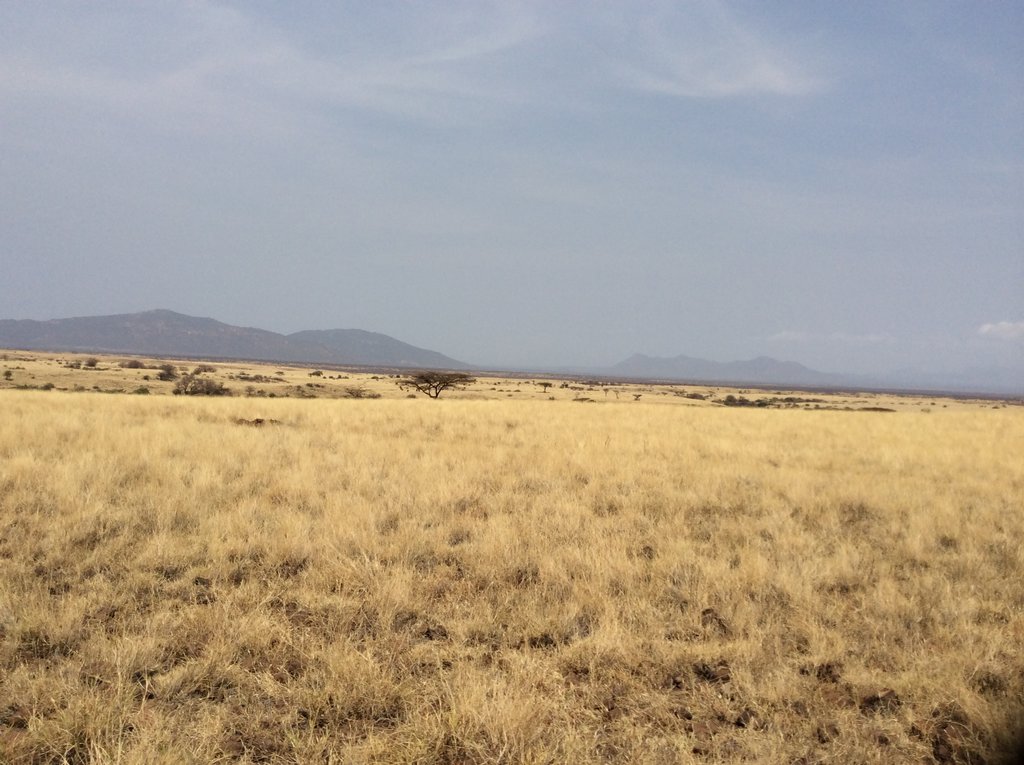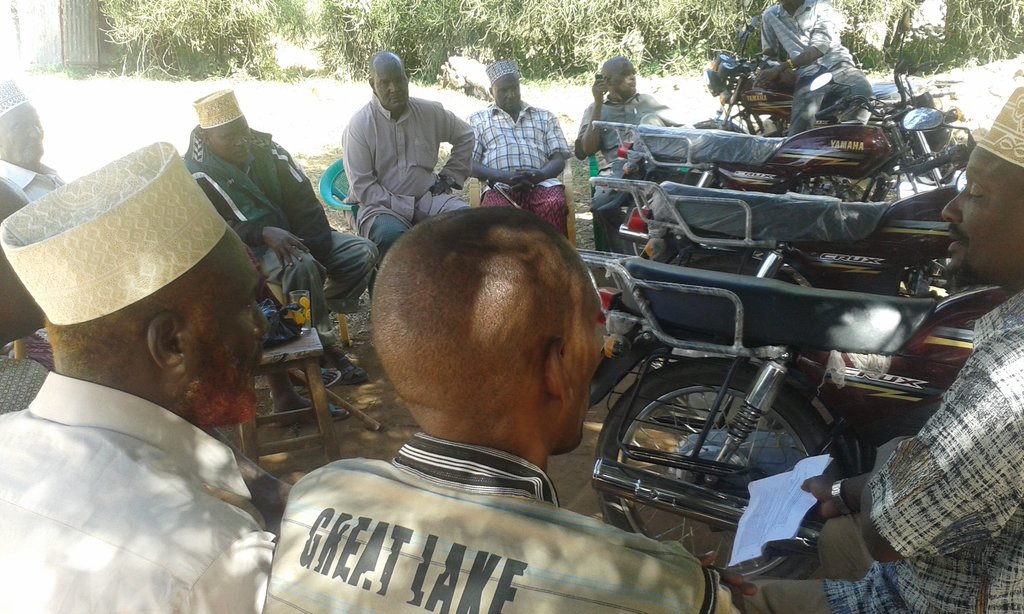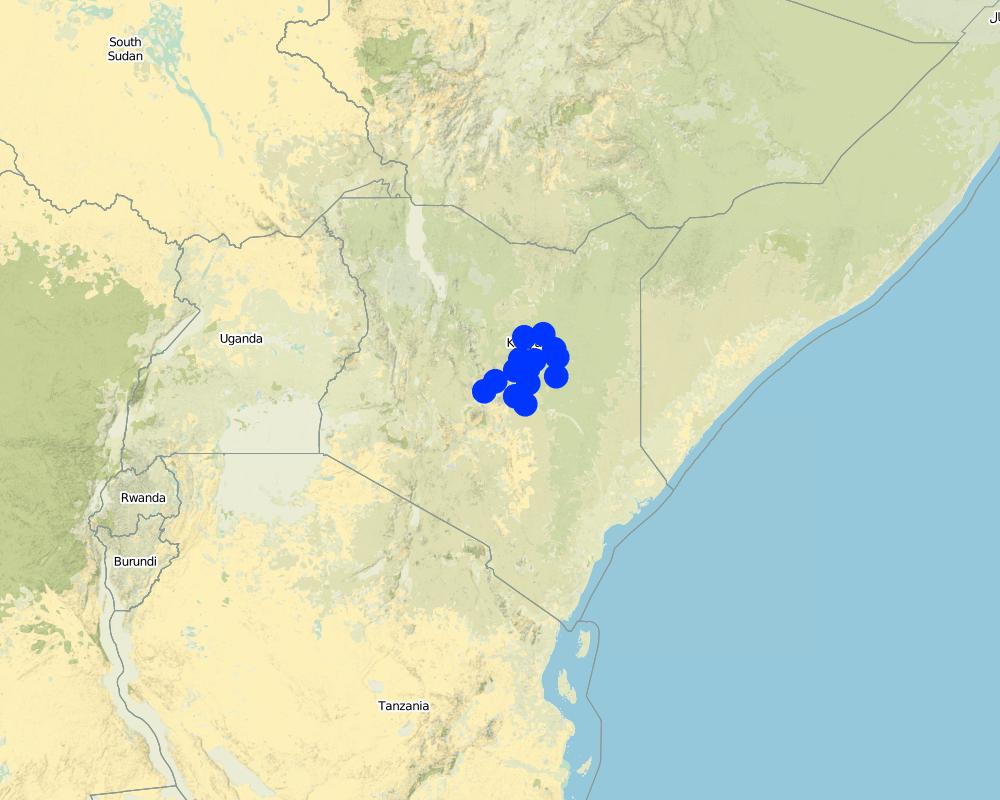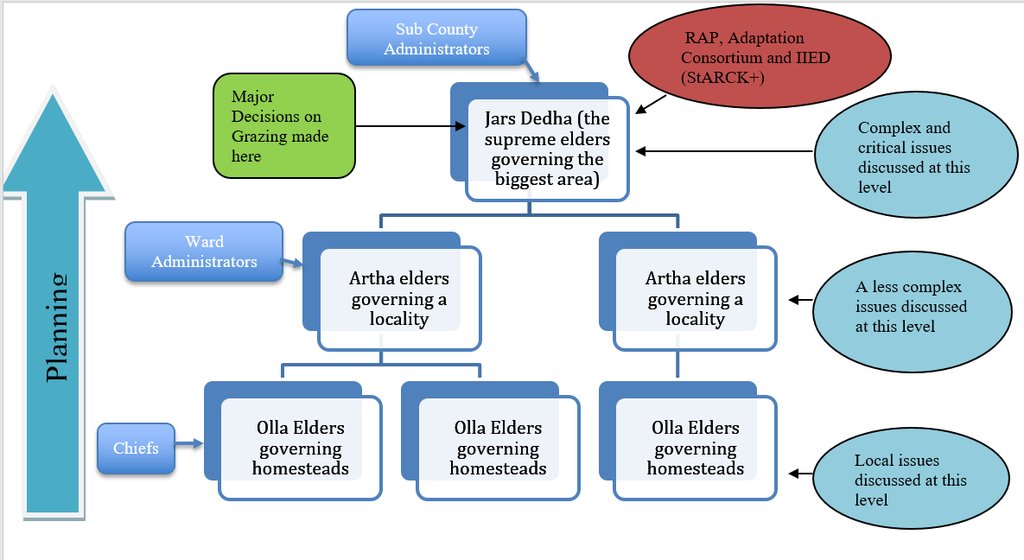Empowering Dedha institutions in governing the natural resources of Isiolo rangelands [Кения]
- Создание:
- Обновить:
- Составитель: IBRAHIM JARSO
- Редактор: Caroline King-Okumu
- Рецензенты: Rima Mekdaschi Studer, Donia Mühlematter
Jars Dedha
approaches_3345 - Кения
- Полная аннотация в формате PDF
- Полная аннотация в формате PDF для вывода на печать
- Полная аннотация в формате интернет-страницы
- Полная аннотация (неотформатированно)
- Empowering Dedha institutions in governing the natural resources of Isiolo rangelands: 13 мая 2018 г. (inactive)
- Empowering Dedha institutions in governing the natural resources of Isiolo rangelands: 31 июля 2018 г. (inactive)
- Empowering Dedha institutions in governing the natural resources of Isiolo rangelands: 3 сентября 2018 г. (inactive)
- Empowering Dedha institutions in governing the natural resources of Isiolo rangelands: 2 ноября 2021 г. (public)
Просмотреть разделы
Развернуть все Свернуть все1. Общая информация
1.2 Контактные данные специалистов и организаций, участвующих в описании и оценке Подхода
землепользователь:
Boru Edin
+254 715 627 545
Kinna Dedha Elders
Kinna town, Kinna Ward, Isiolo County.
Кения
Non-State Actor:
Jama Abdiaziz
+254 707 720 577
aziz2012ke@gmail.com
Pastoralist Capacity Development Programme (PACDEP)
Isiolo Town, Kenya
Кения
землепользователь:
Diba Rukia
+254 728 643 044
Ward Adaptation Planning Committee
Kinna, Isiolo County
Кения
Специалист по УЗП:
Название проекта, содействовавшего документированию/оценке Подхода (если применимо)
Strengthening Adaptation and Resilience to Climate Change in Kenya Plus (StARCK+)Название организации (-ий), содействовавших документированию/оценке Подхода (если применимо)
Resource Advocacy Programme (RAP) - Кения1.3 Условия, регламентирующие использование собранных ВОКАТ данных
Когда были собраны данные (на местах)?
03/11/2017
Составитель и ответственный/-ые специалист(-ы) согласны с условиями, регламентирующими использование собранных ВОКАТ данных:
Да
2. Описание Подхода УЗП
2.1 Краткое описание Подхода
This approach – driven by communities and supported by various agencies - aims to revive and strengthen the traditional natural resource management institutions of Boran pastoralists in Northern Kenya. The traditional system, which was devised by the Boran pastoral community and honed over centuries to suit the challenges of the rangelands, has been steadily eroded by external factors and formalised systems after the emergence of the nation-state.
2.2 Подробное описание Подхода
Подробное описание Подхода:
Pastoral Community Members together with the Jarsa Dedha (the council of elders who control the use of grazing land and its resources) are at the forefront of reinvigorating traditions of rangeland management. To achieve this, they have been supported by organizations including the Ward Adaptation Planning Committees (WAPC), the Resource Advocacy Programme (RAP) and the International Institute for Environment and Development (IIED). There has been a focus on reviving traditional institutions and systems of managing of natural resources to help communities adapt to climate change.
One specific project that has assisted the re-empowerment of the Dedha institutions was StARCK+ (funded by DfID). StARCK+ was founded on an understanding and an appreciation of the traditional natural resource governance of the Boran pastoral community. Responding to participatory demand it undertook to help strengthen this customary natural resource management system. Various agencies have also conducted research on the traditional institution and investigated how it could be improved. These include IIED, (UK), the University of Nairobi, (Kenya) and the University of Sussex (UK).
The Jarsa Dedha is an indigenous institution, through which customary laws and provisions guide the management of natural resources. The Boran of Isiolo County, Kenya, like their kin in southern Ethiopia, derive their customary laws from an overall supreme general assembly called the Gadha. The Gadha governing council preserves traditional laws and codes of conduct, as well as issuing amendments and additions based on the evolving environmental, social and cultural context. The Gadha system has a set of laws and provisions (seere), customs and culture (aada), and norms and values that govern society.
The recognition and observance of seere and aada are still considered vital for the wellbeing of the community, and the Gadha Council remains a legitimate institution in the eyes of Borana society. However, adherence to these laws is declining and the power of Borana customary institutions to enforce regulations is being undermined in a number of ways.
The reasons for weakening traditional institutions are basically poor recognition by the county and national government, and non-compliance with the rules due to changing socio-cultural norms. The council of elders that govern grazing resources, the Jarsa Dedha, which is the custodian of these unwritten rules and regulations locally, no longer has sufficient capacity or authority to enforce them as it had done prior to colonial rule. With climate change, pasture and water supplies are becoming scarcer and there is no other better way to govern land than the traditional system: that is why reviving, strengthening and improving the system was much welcomed through the advent of the StARCK+ project and the initiatives and support that have followed.
Looking towards the future, the rules of governing natural resources have been collected and formed into a draft county customary natural resource governance bill. This, if passed by the County Assembly, would represent a very significant step, by legitimising the traditional system of rangeland management through the Jarsa Dedha.
2.3 Фотографии, иллюстрирующие Подход
2.4 Видеоматериалы по применению Подхода
Комментарий, краткое описание:
The video clearly defines the technology and the approach
Дата:
20/02/2015
Место:
Garbatulla Area
Автор съемки:
Hilda Kathure
2.5 Страна/ регион/ место, где применялся Подход
Страна:
Кения
Административная единица (Район/Область):
Isiolo
Более точная привязка места:
Pastoral areas of Isiolo
Map
×2.6 Даты начала и окончания реализации Подхода
Год начала реализации:
2012
Если год начала реализации Подхода достоверно неизвестен, дайте примерную оценку:
менее 10 лет назад (недавняя)
Комментарии:
The project started 2012 and ended 2016 but the approach is still continuing
2.7 Тип Подхода
- традиционная/ местная система землепользования, используемая коренным населением
2.8 Каковы цели/ задачи Подхода
The Approach is aimed at strenghthening and re-empowering the traditional institutions that govern rangeland management in the rangelands of Isiolo, in order to improve utilisation of natural resources and build community resilience to droughts and future environmental changes.
2.9 Условия содействующие применению Технологии/ Технологий в рамках Подхода или затрудняющие его
Социальные/ культурные/ религиозные нормы и ценности
- содействуют
The approach was traditional and embedded in the culture of boran pastoralists and therefore easy to implement.
- затрудняют
The commercialization of livestock and its production like milk has made it difficult for elders to implement the approach.
Наличие/ доступность финансовых ресурсов и услуг
- содействуют
Communities make their own contributions to support implementation of the approach.
- затрудняют
No specific budget assigned by government authority for this approach: some funds from projects and county government and contributions from the pastoralists themselves.
Институциональные условия
- содействуют
Well elaborated organizational design at all levels of institutional scale.
- затрудняют
Collision between the mandates of traditional structure and formal structure. This was addressed through accepting Chiefs as ex-official members in the Dedha council of elders.
Сотрудничество/ координация действий
- содействуют
Many NGOs and local organization support the implementation of the approach through providing means for surveillance such as vehicles or motorbikes. NGOs frequently also support Dedha assemblies that involve meetings of people from far away.
- затрудняют
Government and some NGOs sometimes establish parallel grazing committees.
Нормативно-правовая база (землевладение, права на земле- и водопользование)
- содействуют
Traditional tenure system.
- затрудняют
No legal papers for the ownership.
Программные документы/ руководящие установки
- содействуют
Traditional provisions and rules known by all community members.
- затрудняют
Traditional rules not known to everyone.
Управление земельными ресурсами (принятие решений, осуществление и контроль за выполнением)
- содействуют
Elders make key decisions on governance of land.
- затрудняют
Women and youth not well involved in decision making although changes are happening nowadays to include them.
Осведомленность в области УЗП, доступность технической поддержки
- содействуют
Traditional skills much used.
- затрудняют
Little technical support.
Рынки (для приобретения материалов и услуг, продажи продукции) и цены
- содействуют
Ensures security and market thrives.
- затрудняют
The approach is more social and not market oriented.
Объем работ, доступность рабочей силы
- содействуют
Youth provide man power Voluntarily.
- затрудняют
Volunteers sometimes don’t come out for work.
3. Участие и распределение ролей заинтересованных сторон
3.1 Заинтересованные стороны, участвующие в реализации Подхода и их роли
- местные землепользователи/ местные сообщества
Boran Community members, Dedha elders.
Agree on the pasture and water management approach and implement .
- организации местных сообществ
Ward Adaptation Planning Committees.
Implement community plans and fundraise for it.
- общественные организации
Resource Advocacy Programme (RAP), Merti Integrated Development Programme (MIDP), Pastoralist A Capacity Development E Programme (PACDEP), International Institute for Environment Development and Adaptation Consortium (ADA)
Support communities in implementing the approach.
Ward Adaptation Planning Committees; Implement community plans and fundraise for it.
Если участвовало несколько заинтересованных сторон, назовите ведущую организацию:
WAPC , ADA and IIED
3.2 Участие местных землепользователей/ местных сообществ на разных стадиях реализации Подхода
| Участие местных землепользователей/ местных сообществ | Перечислите участников и опишите их вовлеченность | |
|---|---|---|
| инициирование/ мотивация | интерактивное | Pastoral Community Members, Dedha elders and supporting organizations like WAPC, RAP, IIED and DfID supported the process of reviving the traditional system of management of natural resources to help communities adapt to climate change. |
| планирование | интерактивное | Pastoral Community Members and Dedha Elders to improve their systems of management of land and land-based resources. |
| выполнение | интерактивное | Dedha elders as they are tasked with ensuring that the natural resource governance system is successful. |
| мониторинг/ оценка | интерактивное | Pastoralists and elders to keep those tasked are properly undertaking the responsibilities. |
3.3 Схема реализации (если имеется)
Описание:
The Dedha traditional system of managing resources has internal hierarchy at different levels i.e. Olla (homestead), Artha (locality) and Dedha (a large area). Although planning and minor decisions are made at local levels, major and binding decisions are agreed at Dedha level on grazing and management of pasture. Many NGOs and government actors engage the management system at Dedha level.
Автор:
Ibrahim Jarso
3.4 Принятие решений по выбору Технологии/ Технологий УЗП
Укажите, кто принимал решение по выбору применяемой Технологии/ Технологий:
- все участники как часть процесса совместных действий
Поясните:
The Participatory process is very essential in making the governance system work for pastoralists.
Поясните на чём было основано принятие решений:
- личный опыт и мнения (незадокументированные)
4. Техническая поддержка, повышение компетенций и управление знаниями
4.1 Повышение компетенций/ обучение
Проводилось ли обучение землепользователей/ других заинтересованных лиц?
Да
Укажите, кто проходил обучение:
- землепользователи
Если существенно, укажите гендерный и возрастной состав, статус, этническую принадлежность и т.д.
Largely elders but women and youth are also represented in the training.
Тип обучения:
- в ходе работы
- обмен опытом между фермерами
- общие собрания
Рассматриваемые темы:
Constitutional clauses supporting management of land through traditional institutions.
Need to legislate the local traditional rules to county laws. Participatory mapping of Natural Resources in the grazing areas to improve planning.
Комментарии:
Community members really participated in the processes and trainings and understood the contemporary issues.
4.2 Консультационные услуги
Есть ли у землепользователей возможность получать консультации?
Да
Укажите, где именно оказываются консультационные услуги:
- в постоянно функционирующих центрах
Описание/ комментарий:
The pastoralist extension training sessions take place in Agricultural Training Centre in Isiolo Town. They are normally conducted once or twice a year because of financial constraints.
4.3 Институциональная (организационная) поддержка
В ходе реализации Подхода были ли организованы новые институциональные структуры или поддержаны уже существующие?
- да, существенно
Укажите уровень, на котором структуры были укреплены или вновь созданы:
- местные
Опишите организацию, функции и ответственность, членство и т.д.
The Dedha institution has been strengthened as they were enabled to undertake their responsibilities better.
Укажите тип поддержки:
- оборудование
- Their meetings were supported and made frequent and increased reach.
Подробнее:
Provided with materials like motorbikes.
4.4 Мониторинг и оценка
Являются ли мониторинг и оценка частью Подхода?
Да
Комментарии:
This is a traditional approach and it is effectively self-monitored for learning and improvement.
Если да, будет ли данный документ использоваться для мониторинга и оценки?
Да
4.5 Научные исследования
Были ли научные исследования частью Подхода?
Да
Укажите темы исследований:
- социология
- экономика / маркетинг
- экология
- технология
Напишите подробнее и назовите тех, кто выполнял исследования:
Various institutions have conducted research on the traditional institution and investigated how it could be improved through strengthening and reviving it with new initiatives for improved governance of natural resources. The institutions are the International Institute for Environment and Development, (UK), the University of Nairobi, (Kenya) and the University of Sussex (UK).
5. Финансирование и внешняя материальная поддержка
5.1 Годовой бюджет мероприятий по УЗП в рамках Подхода
Комментарий (например, основные источники финансирования/ ключевые доноры):
The traditional system is self sustaining and thrives through local contributions but no specific budget lines.
5.2 Финансирование и внешняя материальная поддержка, предоставляемая землепользователям
Предоставлялась ли землепользователям финансовая/ материальная поддержка для применения Технологии /Технологий?
Нет
5.3 Субсидии на отдельные затраты (включая оплату труда)
- нет
Если труд землепользователя был существенным вкладом, укажите, был ли этот вклад:
- добровольный
Комментарии:
The land users are pastoralists and surveillance of grazing reserves were undertaken to protect their pastures from irregular access. Dedha elders oversee the surveillance and health of rangelands.
5.4 Кредитование
Предоставлялись ли в рамках Подхода кредиты на мероприятия УЗП?
Нет
5.5 Другие методы или инструменты стимулирования
Использовались ли другие методы или инструменты стимулирования для продвижения Технологий УЗП?
Да
Если да, поясните:
The rules of governing natural resources were collected and documented into a county customary natural resource governance bill.
6. Анализ влияния и заключительные положения
6.1 Влияние Подхода
Сумел ли Подход расширить возможности местных землепользователей, повысить участие заинтересованных сторон?
- Нет
- Да, немного
- Да, умеренно
- Да, существенно
Strengthens community rights and ownership of their land.
Сумел ли Подход дать возможность принимать решения на основе подтвержденных фактов?
- Нет
- Да, немного
- Да, умеренно
- Да, существенно
The Approach convened the community and identified the community challenges and worked on it with the support of Dedha elders.
Сумел ли Подход помочь землепользователям внедрить и поддерживать технологии УЗП?
- Нет
- Да, немного
- Да, умеренно
- Да, существенно
Supported the essential activities of the traditional system and made it easy to implement.
Сумел ли Подход улучшить согласованность действий и повысить рентабельность применения практик УЗП:
- Нет
- Да, немного
- Да, умеренно
- Да, существенно
Improved coordination among the partners and made implementation easy.
Beside getting support from County climate adaptation program through the Ward Adaptation Planning Committee, the approach also got support from Water Sector Trust Fund.
Сумел ли Подход расширить знания и возможности землепользователей в применении практик УЗП?
- Нет
- Да, немного
- Да, умеренно
- Да, существенно
The knowledge is culturally passed to generations
Сумел ли Подход расширить знания и возможности других заинтересованных сторон?
- Нет
- Да, немного
- Да, умеренно
- Да, существенно
Yes, other stakeholders’ knowledge on the system was also improved.
Сумел ли Подход укрепить сотрудничество между заинтересоваными сторонами/ выстроить механизмы сотрудничества?
- Нет
- Да, немного
- Да, умеренно
- Да, существенно
Yes, the Approach made local indigenous institution stronger and enhanced their collaboration.
Сумел ли Подход снизить остроту конфликтов?
- Нет
- Да, немного
- Да, умеренно
- Да, существенно
It provided platform for resource based conflict discussions and also settled many of local and trans-boundary conflicts through the empowered Dedha elders
Сумел ли Подход расширить возможности социально и экономически уязвимых групп?
- Нет
- Да, немного
- Да, умеренно
- Да, существенно
Yes, the approached saved livestock from death in times of drought and built pastoral communities economically.
Сумел ли Подход содействать гендерному равенству и расширить права и возможности женщин и девочек?
- Нет
- Да, немного
- Да, умеренно
- Да, существенно
The aAproach engaged the Dedha elders to accept women in their traditional institutions and entrenched gender in establishment of WAPCs
Сумел ли Подход стимулировать молодежь/ будущее поколение землепользователей заниматься УЗП?
- Нет
- Да, немного
- Да, умеренно
- Да, существенно
Many youth were involved in implementing the Traditional systems of governance as a result of the approach
Сумел ли Подход разрешить правовые проблемы землевладения/ землепользования, препятствующие использованию технологий УЗП?
- Нет
- Да, немного
- Да, умеренно
- Да, существенно
Yes, the Approach led to formulation of customary natural resource management bill meant to enhance land rights.
Сумел ли Подход способствовать улучшению продовольственой безопасности/ качества питания?
- Нет
- Да, немного
- Да, умеренно
- Да, существенно
Yes, through ensuring retention of livestock asset.
Сумел ли Подход расширить доступ к рынкам?
- Нет
- Да, немного
- Да, умеренно
- Да, существенно
The Approach through improvement of range management institution of Dedha, has helped to ensure there is food for pastoral herds and livestock with good body conditions were sold in local markets in good prices
Сумел ли Подход улучшить санитарные условия и доступ к водоснабжению?
- Нет
- Да, немного
- Да, умеренно
- Да, существенно
Yes, through the approach many water facilities were better managed.
Сумел ли Подход улучшить способность землепользователей адаптироваться к изменениям климата и смягчать последствия катастрофических погодных явлений?
- Нет
- Да, немного
- Да, умеренно
- Да, существенно
Yes, the Approach empowered the community to arrange their pattern of grazing to wet, dry season and grazing reserves to cope with climate extremes and disasters.
Сумел ли Подход привести к созданию новых рабочих мест/ к расширению возможностей получения дохода?
- Нет
- Да, немного
- Да, умеренно
- Да, существенно
Yes, many job opportunities were created for locals and also private businesses.
6.2 Основные причины, побуждающие землепользователей внедрять УЗП
- рост продуктивности
The livestock was calving and reproducing very fast leading to increased production as a result of good management of land.
- рост прибыли (доходности) и рентабельности
With minimal and voluntary inputs the pastoralists keep livestock in the range and make a lot of profit when they sell.
- снижение деградации земель
The controlled grazing pattern led to regeneration of degraded rangelands and improved its ecosystem services.
- снижение риска катастрофических погодных явлений
With strengthened dedha elders the community were able to prepare very well to drought and other disasters.
- снижение объёма работ
Available pasture when needed reduced the challenges of mobility to far areas and excess workload.
- престиж, общественное давление/ солидарность
The approach enhances local prestige and also reduces the incidences of conflict in tough times enhancing social cohesion.
- экологическая сознательность
The approach allows regeneration of natural vegetation as pastoralists preserve pasture in one grazing area as they grazing in the other.
- традиции и верования, нравственные ценности
The approach uses traditional etiquettes which enhances customs and beliefs.
- приобретение знаний и опыта в области УЗП
The approach allows young people to learn and attain new knowledge on proper governance of natural resources as well the elders attain new contemporary skills to manage land.
- улучшение эстетической привлекательности
The preserved grazing areas allows pasture to blossom and very beautiful to the eye as ecosystems regenerates and gets in to new life.
- снижение остроты конфликтов
The approach reduces incidences of conflict as the use and stewardship of pasture and water is clearly defined.
6.3 Долгосрочная устойчивость мероприятий в рамках Подхода
Могут ли землепользователи самостоятельно (без внешней поддержки) продолжать применение того, что было реализовано в рамках Подхода?
- да
Если да, опишите как:
The traditional system of managing natural resources for pastoralists has been in place for time immemorial and it supports their way of life and even if there is minimal support from outside, such as the empowering approach, the SLM will still continue as it was developed by Boran pastoralists – who feel it is the most legitimate and appropriate system of governing rangelands in the region. This has been confirmed by many analytical studies of the system.
6.4 Сильные стороны/ преимущества Подхода
| Сильные стороны/ преимущества/ возможности по мнению землепользователей |
|---|
| It is inherent approach that will pass to the next generation of pastoralists with the new innovations that are incorporated over the years. |
| It is the cheapest and easiest way of managing the rangelands for posterity. |
| It is a very flexible approach that's accepting new changes so that the technology is conversant at all times. |
| Сильные стороны/ преимущества/ возможности по мнению составителя или других ключевых специалистов |
|---|
| It is a legitimate system recognized by all pastoralist for management of their rangeland resources. |
| It is conservative and less costly to implement in the vast rangelands with little incentives. |
6.5 Слабые стороны/ недостатки Подхода и пути их преодоления
| Слабые стороны/ недостатки/ риски по мнению землепользователей | Возможные пути их преодоления/снижения? |
|---|---|
| There is no law protecting it. | The government need to establish a law that recognizes and protects the approach. |
| The changing social norms with globalization and diversification of livelihood is pausing a challenge like Commercial Pastoralism | Government need to establish policies and plans as well as legislations that recognizes the traditional systems and institution for the approach to be successful for long |
| Слабые стороны/ недостатки/ риски по мнению составителя или ответственных специалистов | Возможные пути их преодоления/снижения? |
|---|---|
| There are many competing claims over rangeland resources and government supports some. | Create awareness of local leaders about the competing claims and lobby them to protect rangeland resources. |
7. Справочные материалы и ссылки
7.1 Методы сбора/источники информации
- выезды на места, полевые обследования
2 visits
- опросы землепользователей
6 interviews
- данные, собранные из отчетов и достоверных документов
2
7.2 Ссылки на опубликованные материалы
Название, автор, год публикации, ISBN:
Evolving pastoralists institutions by patison and tari
Где опубликовано? Стоимость?
IIED Website
7.3 Ссылки на материалы, доступные онлайн
Название/ описание:
Evolving customary institutions by patison and tari
Адрес в сети Интернет:
pubs.iied.org/pdfs/10076IIED.pdf
Название/ описание:
Strengthening Customary institutions the case of Isiolo County Northern Kenya by Caroline, Tari and Jarso
Адрес в сети Интернет:
www.celep.info/wp-content/uploads/2015/11/Strengthening-local-institutions.pdf
Название/ описание:
Investing in institutional ‘software’ to build climate resilience
Адрес в сети Интернет:
https://anglejournal.com/article/2015-06-investing-in-institutional-software-to-build-climate-resilience/
Название/ описание:
Inclusive green growth in Kenya: Opportunities in the dryland water and rangeland sectors
Адрес в сети Интернет:
http://pubs.iied.org/10137IIED/
Название/ описание:
Vegetation resources and their economic importance in Isiolo County, Kenya
Адрес в сети Интернет:
http://pubs.iied.org/10141IIED/
Ссылки и модули
Развернуть все Свернуть всеСсылки
Нет ссылок
Модули
Нет модулей







